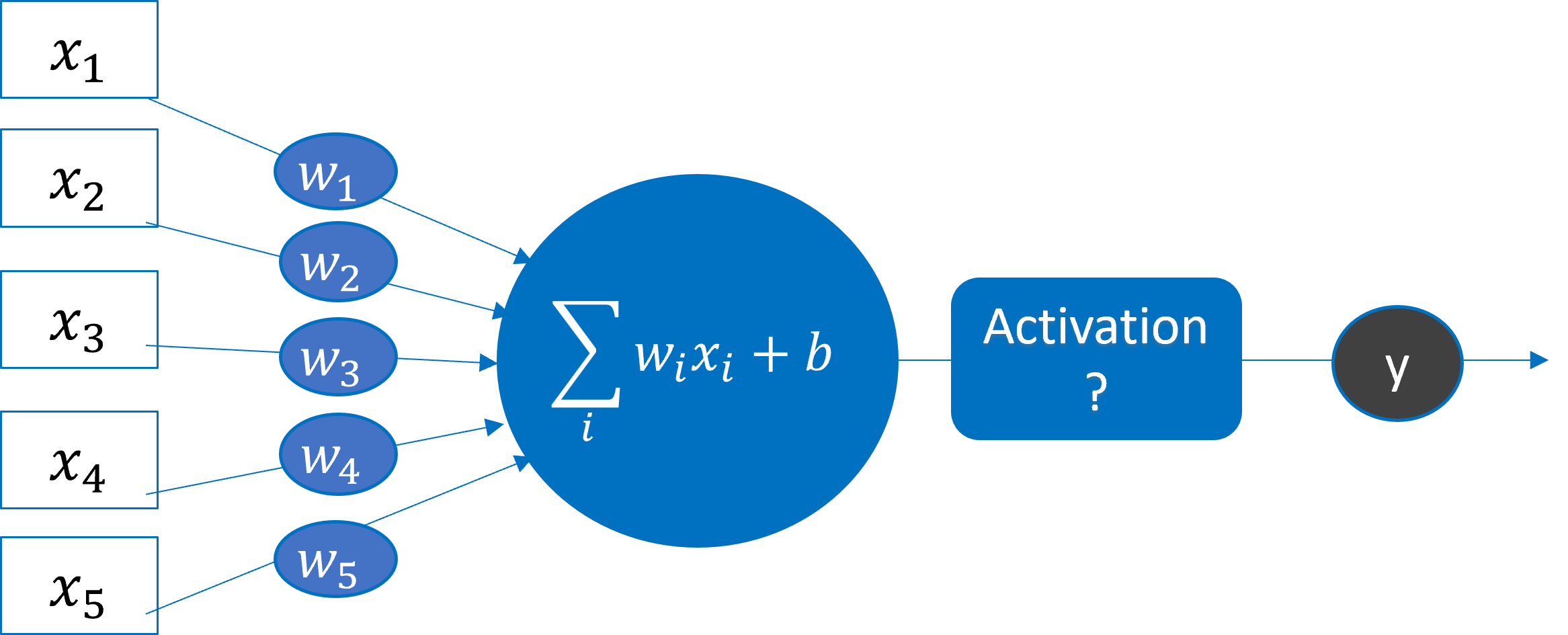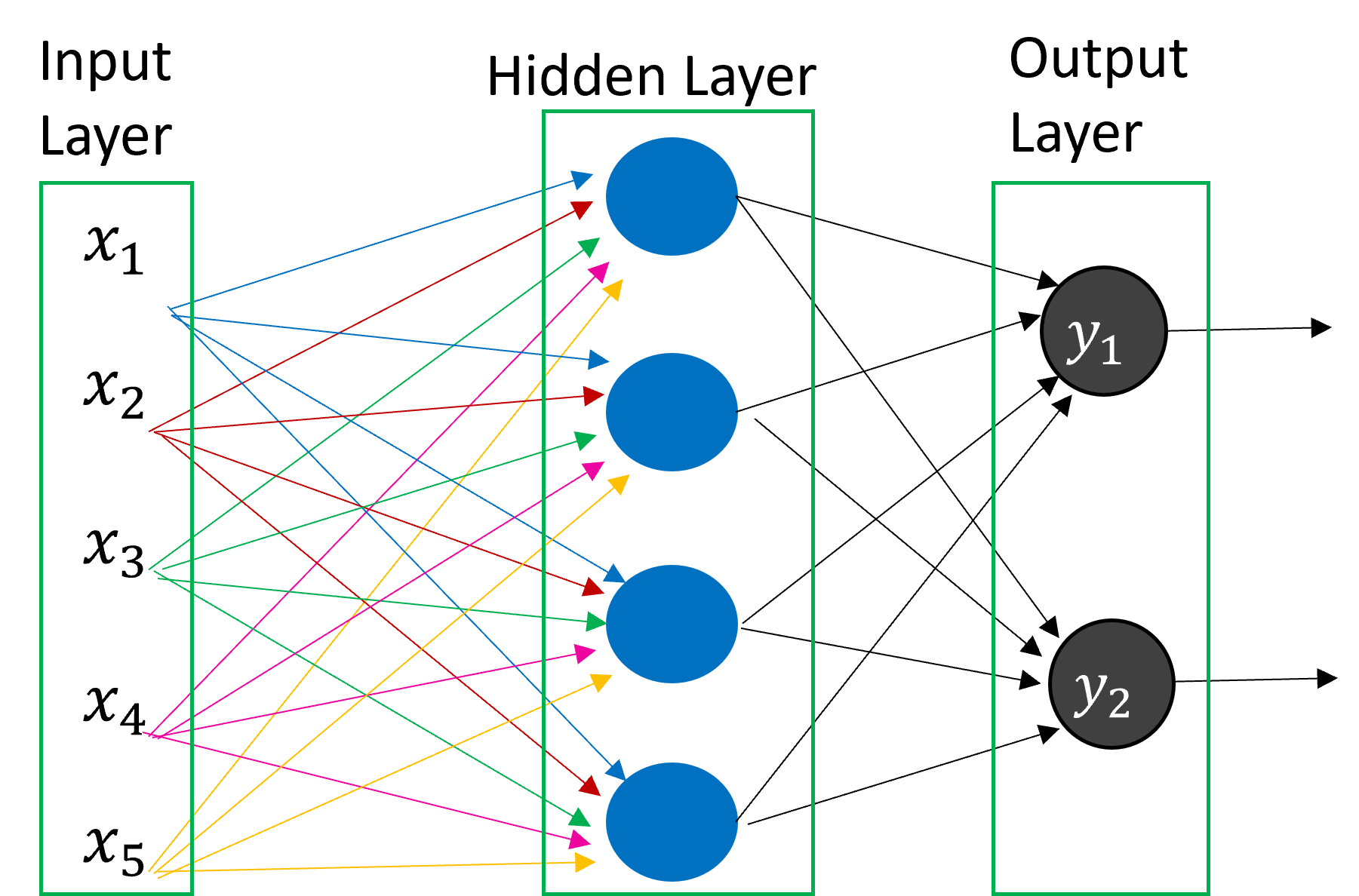Neural Networks
Neural networks are a computational model used in machine learning which is based on the biology of the human brain.
The building blocks of a neural network are neurons, also known as nodes. Within each node is a very basic algebraic formula that transforms the data.
Simulation of a Neuron

The “incoming signals” would be values from a data set.
A simple computation (like a weighted sum) is performed by the “nucleus”. Then, an “activation” function is used to determine if the output is “on” or “off”.
The weights, $w_i$, and the bias $b$, are not known at first. Random guesses are chosen. During training, the “best” set of weights are determined that will generate a value close to $y$ for the collection of inputs $x_i$.
Network of Nodes
A single node does not provide much information (often times, a 0 or 1 value), but creating a network or layer of nodes will provide more information.

Different computations with different weights can be performed to produce different outputs. This is called a feedforward network – all values progress from the input to the output.
The Layers of a Network

A neural network has a single hidden layer. A neural network with two or more hidden layers is called a “deep neural network”.
How does the machine learn?
The output values or “predicted” values of the network can be compared with the expected results/categories/labels.
- Start with a random guess for the weights and biases.
- Another function, called a “loss” or “cost” function can be used to determine the overall error of the model.
- That error can be used to work backwards through the network and tweak the weights/biases.
- This step is called backward propagation .
Overview of the Learning Process
Activation Function
- An activation function will determine if a node should “fire”.
- Examples include relu, sigmoid, and softmax.
- A complete list is available at https://keras.io/api/layers/activations/ .
Loss Function
- A loss function is a function that will be optimized to improve the performance of the model.
- Examples include BinaryCrossEntropy and CategoricalCrossEntropy.
- A complete list is available at https://keras.io/api/losses/ .
Metrics: A formula for measuring the accuracy of the model.
- Examples include Accuracy and MeanSquaredError.
- A complete list is available at https://keras.io/api/metrics.
Optimizer functions
- The function for tweaking the weights.
- Examples include SGD, Adam, and RMSprop.
- A complete list is available at https://keras.io/api/optimizers/ .
Epochs and Batch Size
Epochs: Number of loops – how many times the forward/backward process should be performed.
Batch Size: Within an epoch, the training data are divided into small batches and sent through the network. All training data are processed in an epoch.